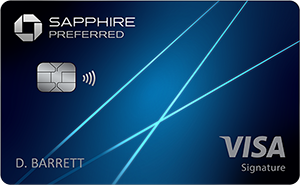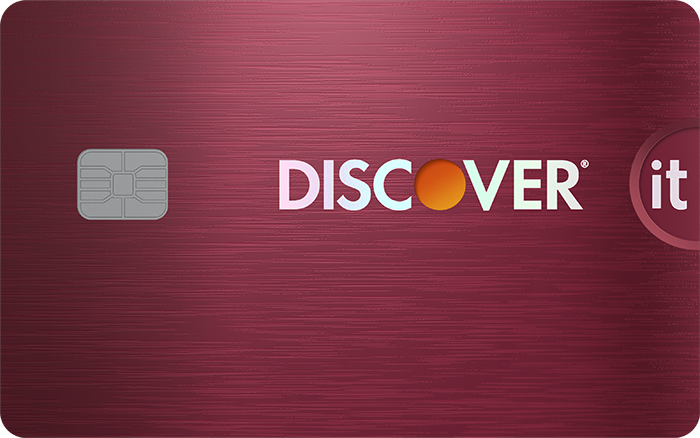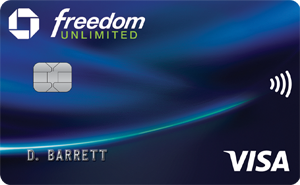Since credit cards are normally used for purchases, you might not know how to send money from a credit card to a bank account. Although this isn't a common way to use a credit card, it is an option if you need to transfer money to yourself or someone else.
You have a few methods to choose from, but most of them will include additional transaction fees. Once you know more about them, you can pick the one that works best for your situation.
How to send money from a credit card to a bank account
Here are the most common ways to send money from a credit card to a bank account:
- Get a cash advance
- Wire money from your credit card
- Use a payments app
- Redeem cash back
If you want to send money to your own bank account, you can do so through a cash advance or a money wire -- or by redeeming cash back (if you have it available). Payments apps are an option if you want to send money to someone else's bank account.
You'll find more information on each method below.
Get a cash advance
A cash advance is a feature that's designed for getting cash from a credit card. While it's usually the easiest option, it's also expensive.
There are a few ways to get a cash advance from your credit card:
- Request convenience checks from your card issuer. These are tied to your credit card account and work like any other paper check. Write the check for the amount you want and deposit it to your bank account.
- Use it like a debit card. Withdraw cash from an ATM using your credit card, and then deposit it into your bank account.
- Have your bank deposit a cash advance directly into your account. This might be an option if you have a credit card with the same bank where you have a bank account.
The convenience of a cash advance comes at a price. Card issuers usually charge a 5% cash advance fee. They also start charging credit card interest on cash advances immediately. You don't get a grace period like you do with purchases.
TIP
Your card's cash advance limit likely isn't the same as its credit limit (the maximum amount you can spend on purchases). Most credit cards put a lower limit on cash advances. For example, if your card's credit limit is $5,000, its cash advance limit may be $2,000.
Wire money from your credit card
Many money transfer services, such as Western Union and MoneyGram, allow you to send money directly to a bank account and pay by credit card. Here's how to transfer funds this way:
- Visit the money transfer service's website
- Choose the amount you want to send
- Enter the recipient's (or your own) bank account information
- Enter your credit card as the payment method and submit the transfer
Credit card companies almost always consider it a cash advance when you pay for a wire transfer with your credit card. That means there are cash advance fees and immediate interest charges. The money wire service will also have its own transaction fees.
Use a payments app
If you're looking for a way to send money from your credit card to someone else's bank account, there are several payments apps that let you do just that. A few of the most popular ones are:
They're easy to use. Here's a quick breakdown of how to send money after you download a payments app:
- Add your credit card as a payment method
- Choose the option to send money
- Look up the recipient through their name, phone number, or email address
- Pick an amount to send and confirm the transaction
There is a fee for credit card payments, so it typically costs more than paying by debit card. The usual credit card fee is 3%. Your recipient will also need to have an account with the app so you can send them money.
Your credit card issuer may consider this type of payment a cash advance. Or, the payment could be considered a purchase, in which case there are no additional fees from your card issuer. It depends on both the card issuer and the payment app. The only way to be sure is to contact your card issuer first to ask.
Redeem cash back
Cash back credit cards earn a percentage back on purchases you make. For example, with a cash back card that offers 2% on purchases, you'd get $2 back on every $100 you spend. The card issuer typically adds cash back to your rewards balance
If you have a cash back credit card and you're wondering how to get that money in your bank account, it's a straightforward process. Log in to your credit card account and go to the rewards page, or call your card issuer at the number on the back of your card.
The ways you can redeem cash back depend on the card issuer. Most give you options:
- Use cash back for a statement credit on your credit card bill
- Get a check in the mail for your cash back
- Make a direct deposit into your bank account for your cash back
Of all the ways to send money from credit cards to bank accounts, cash back is the only one worth using on a regular basis. So, if you want a card you can use to boost your bank account, apply for a cash back card.
The other options all tack on additional fees, and if you can't pay off the money you borrowed, you'll end up in credit card debt. It's good to know how they work in case you ever need to get cash from your credit card. Generally, it's better to pay with income or savings.
Credit card comparison
We recommend comparing options to ensure the card you're selecting is the best fit for you. To make your search easier, here's a short list of standout credit cards.
| Offer | Our Rating | Welcome Offer | Rewards Program | APR | Learn More |
|---|---|---|---|---|---|
|
Rating image, 5.00 out of 5 stars.
5.00/5
Our ratings are based on a 5 star scale.
5 stars equals Best.
4 stars equals Excellent.
3 stars equals Good.
2 stars equals Fair.
1 star equals Poor.
We want your money to work harder for you. Which is why our ratings are biased toward offers that deliver versatility while cutting out-of-pocket costs.
|
Discover will match all the cash back you’ve earned at the end of your first year. N/A | 1% - 5% Cashback Earn 5% cash back on everyday purchases at different places you shop each quarter like grocery stores, restaurants, gas stations, and more, up to the quarterly maximum when you activate. Plus, earn unlimited 1% cash back on all other purchases—automatically. |
Intro: Purchases: 0%, 15 months Balance Transfers: 0%, 15 months Regular: 17.24% - 28.24% Variable APR |
||
|
Rating image, 5.00 out of 5 stars.
5.00/5
Our ratings are based on a 5 star scale.
5 stars equals Best.
4 stars equals Excellent.
3 stars equals Good.
2 stars equals Fair.
1 star equals Poor.
We want your money to work harder for you. Which is why our ratings are biased toward offers that deliver versatility while cutting out-of-pocket costs.
|
Up to $300 cash back Earn an extra 1.5% on everything you buy (on up to $20,000 spent in the first year) — worth up to $300 cash back. That's 6.5% on travel purchased through Chase Travel, 4.5% on dining and drugstores, and 3% on all other purchases. | 1.5% - 5% cash back Enjoy 5% cash back on travel purchased through Chase Travel, our premier rewards program that lets you redeem rewards for cash back, travel, gift cards and more; 3% cash back on drugstore purchases and dining at restaurants, including takeout and eligible delivery service, and 1.5% on all other purchases |
Intro: 0% Intro APR on Purchases and Balance Transfers for 15 months Purchases: 0% Intro APR on Purchases, 15 months Balance Transfers: 0% Intro APR on Balance Transfers, 15 months Regular: 20.49% - 29.24% Variable |
Apply Now for Chase Freedom Unlimited®
On Chase's Secure Website. |
|

Apply Now for Chase Sapphire Preferred® Card
On Chase's Secure Website. |
Rating image, 4.50 out of 5 stars.
4.50/5
Our ratings are based on a 5 star scale.
5 stars equals Best.
4 stars equals Excellent.
3 stars equals Good.
2 stars equals Fair.
1 star equals Poor.
We want your money to work harder for you. Which is why our ratings are biased toward offers that deliver versatility while cutting out-of-pocket costs.
|
60,000 bonus points Earn 60,000 bonus points after you spend $4,000 on purchases in the first 3 months from account opening. That's $750 when you redeem through Chase Travel℠. | 5x on travel purchased through Chase Travel℠, 3x on dining and 2x on all other travel purchases Enjoy benefits such as 5x on travel purchased through Chase Travel℠, 3x on dining, select streaming services and online groceries, 2x on all other travel purchases, 1x on all other purchases, $50 Annual Chase Travel Hotel Credit, plus more. |
Intro: N/A Purchases: N/A Balance Transfers: N/A Regular: 21.49%-28.49% Variable |
Apply Now for Chase Sapphire Preferred® Card
On Chase's Secure Website. |
Still have questions?
Some other questions we've answered:
FAQs
-
It can take anywhere from a few minutes to several business days to transfer money from a credit card to a bank account. The amount of time depends on the transfer method you choose. If you get a cash advance or pay through an app, it's possible to transfer the money in 30 minutes or less.
-
It normally costs between 3% and 5% to transfer money from a credit card to a bank account:
- If you use a payments app to send someone else money, the standard credit card fee is 3%.
- If you get a cash advance, the standard fee is 5%. Cash advances also have interest charges that start immediately after you get one.
So if you take a cash advance of $1,000, you might pay $50 in fees (not including interest).
-
Yes, you can transfer money from a credit card to a bank account online by using a money wire service. If you have a credit card and bank account with the same bank, you may also be able to get a credit card cash advance deposited directly to your bank account. Both these options have additional fees since they're cash advances.
Our Credit Cards Experts
We're firm believers in the Golden Rule, which is why editorial opinions are ours alone and have not been previously reviewed, approved, or endorsed by included advertisers. The Ascent does not cover all offers on the market. Editorial content from The Ascent is separate from The Motley Fool editorial content and is created by a different analyst team.

